The Alaska Red-tailed Hawk (Buteo jamaicensis alascensis) commands the skies over the vast and varied landscapes of Alaska, standing as an iconic raptor in the region.
Renowned for its distinct features and adaptability, this large bird of prey is a subspecies of the widespread Red-tailed hawks.
With a wingspan ranging from 45 to 52 inches, it exhibits a captivating plumage of dark browns and striking rufous hues.
Recognizable by its unique facial markings, including a prominent dark line under its eye, the Alaska Red-tailed Hawk is a masterful hunter, preying on small mammals and displaying remarkable aerial acrobatics during courtship.
Its nesting behaviors, vocalizations, and role as a top predator contribute to its ecological significance in the pristine wilderness of Alaska, making it a subject of fascination for bird enthusiasts and a symbol of the region’s untamed beauty. Stay focused.
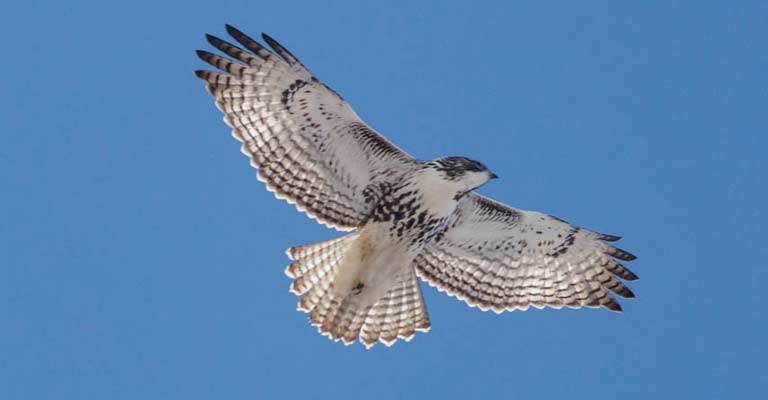
Physical Characteristics of Alaska Red-tailed Hawk
The Alaska Red-tailed Hawk (Buteo jamaicensis alascensis) is a distinct subspecies of the widespread Red-tailed Hawk found across North America.
While it shares many features with its counterparts, certain physical characteristics set it apart.
Identifying the Alaska Red-tailed Hawk requires a keen eye and an understanding of these unique traits.
Size and Shape
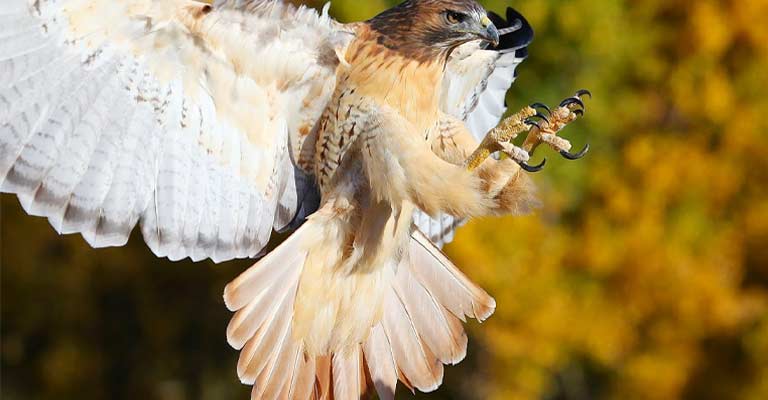
The Alaska Red-tailed Hawk is a large bird of prey, with a wingspan ranging from 45 to 52 inches. Its body length is typically between 18 to 26 inches.
Its broad wings and short, wide tail give it the classic hawk silhouette. Observers can distinguish it from other hawks by its robust build.
Coloration
The plumage of the Alaska Red-tailed Hawk exhibits a variety of colors. The upperparts are typically dark brown, with a distinct rufous hue on the tail.
The underparts are paler, often with a mottled appearance. Look for a dark belly band that contrasts with the lighter surrounding feathers.
Head and Facial Features
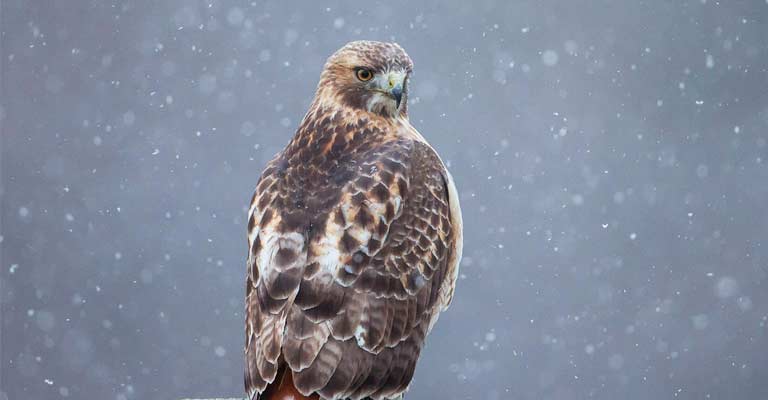
The head of the Alaska Red-tailed Hawk is characterized by a dark cap that extends to its nape.
The facial region is marked by a distinctive dark line, or “comma,” under the eye, which contrasts with the lighter coloration on the rest of the face. This feature is particularly prominent in mature individuals.
Bill and Talons
The beak of the Alaska Red-tailed Hawk is hooked and sharp, adapted for tearing into prey. Its powerful talons are large and robust, equipped for capturing and holding onto a variety of prey items.
Eye Color
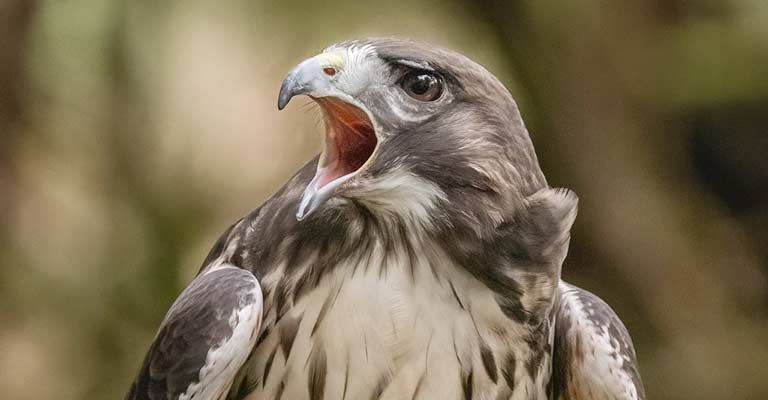
One of the key identifiers is the striking dark eyes. Unlike some other Red-tailed Hawk subspecies, the Alaska Red-tailed Hawk typically displays dark irises.
This characteristic stands out against its pale facial features.
Flight Pattern
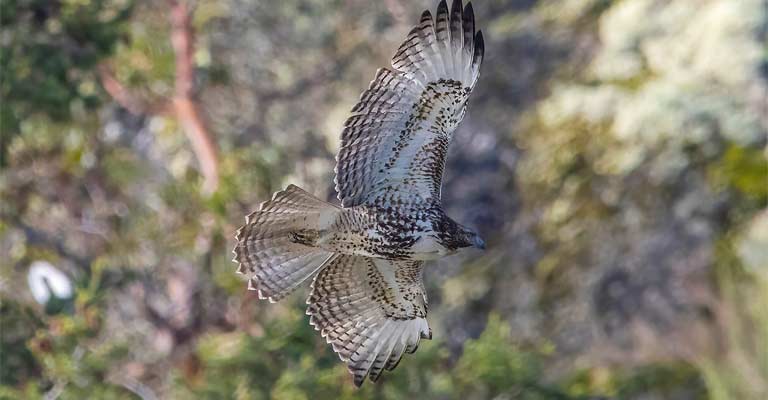
When in flight, the Alaska Red-tailed Hawk’s broad wings are held in a dihedral shape, forming a shallow V. The rufous coloration on the tail is often visible from below, aiding in identification even at a distance.
Habitat and Range
As the name suggests, the Alaska Red-tailed Hawk is primarily found in the vast wilderness of Alaska.
Its habitat includes forests, tundra, and open landscapes, making it adaptable to various environments within the region.
Vocalization
The vocalization of the Alaska Red-tailed Hawk is a distinctive, high-pitched scream often described as a “kleeek” or “keeeeer.”
Familiarizing oneself with this call can be an auditory clue for identifying the species in the wild.
Recognizing the Alaska Red-tailed Hawk involves a combination of size, coloration, facial markings, and distinctive features in flight.
By paying attention to these key characteristics, birdwatchers and enthusiasts can confidently identify this unique subspecies in its natural habitat.
Taxonomy of Alaska Red-tailed Hawk
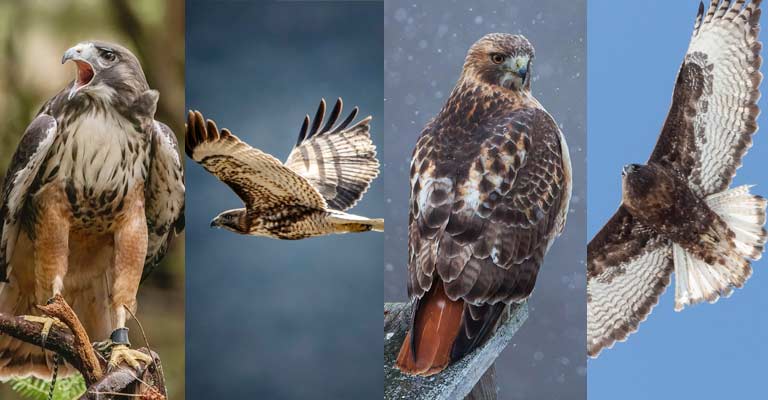
Here’s a table summarizing the taxonomy details of the Alaska Red-tailed Hawk (Buteo jamaicensis alascensis):
| Taxonomic Level | Classification |
| Domain | Eukaryota |
| Kingdom | Animalia |
| Phylum | Chordata |
| Class | Aves |
| Order | Accipitriformes |
| Family | Accipitridae |
| Genus | Buteo |
| Species | B. jamaicensis |
| Subspecies | B. j. alascensis |
This table outlines the hierarchical classification of the Alaska Red-tailed Hawk, emphasizing its position within the broader taxonomy of living organisms.
From the Eukaryota domain down to the subspecies level, these classifications provide a systematic understanding of the bird’s place in the biological framework.
The Alaska Red-tailed Hawk (Buteo jamaicensis alascensis) belongs to the Animalia kingdom, Chordata phylum, and Aves class. It is classified under the Accipitriformes order and Accipitridae family.
The genus is Buteo, and the species is B. jamaicensis. As a distinct subspecies, it is further identified as B. j. alascensis.
This raptor’s taxonomy reflects its avian nature, belonging to the larger group of hawks and eagles, highlighting its position in the intricate web of biodiversity within the animal kingdom.
Alaska Red-tailed Hawk Life History
The Alaska Red-tailed Hawk (Buteo jamaicensis alascensis) is a fascinating bird of prey that inhabits the vast and varied landscapes of Alaska.
Its life history unfolds in the context of its food preferences, habitat choices, range, nesting behavior, breeding habits, susceptibility to diseases, potential treatments, and the critical aspect of conservation.
Understanding these facets provides valuable insights into the ecological role of this magnificent raptor in the Alaskan wilderness.
Food
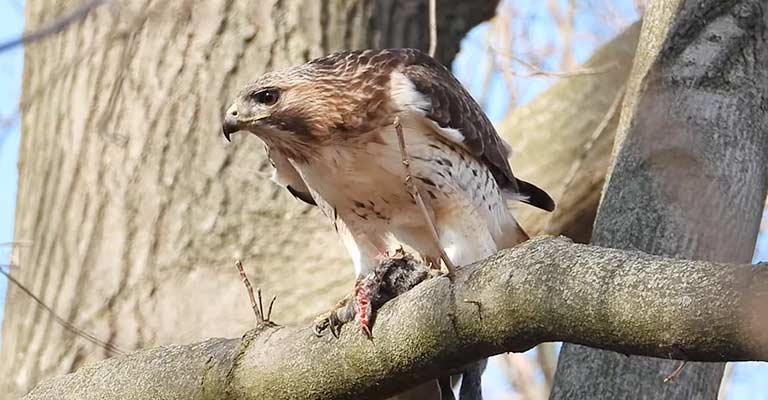
The diet of the Alaska Red-tailed Hawk is diverse, reflecting its position as a raptor at the top of the food chain.
It primarily preys on small mammals, such as voles, rabbits, and ground squirrels. Birds, reptiles, and occasionally carrion also contribute to its diet.
The hawk’s keen eyesight allows it to spot prey from high perches or during soaring flights, making it a formidable hunter in its ecosystem.
Habitat
The Alaska Red-tailed Hawk exhibits adaptability in its habitat choices, ranging from dense forests to open tundra and mountainous regions. It thrives in diverse landscapes, utilizing perches for hunting and nesting.
Its ability to inhabit such a wide range of environments underscores its resilience and flexibility in the face of Alaska’s diverse ecosystems.
Range Map
The range of the Alaska Red-tailed Hawk extends across the expansive wilderness of Alaska, covering vast territories characterized by a variety of ecosystems.
Consultation of a range map reveals its presence in regions ranging from the temperate rainforests of the Southeast to the Arctic tundra in the northernmost parts of the state.
Nesting
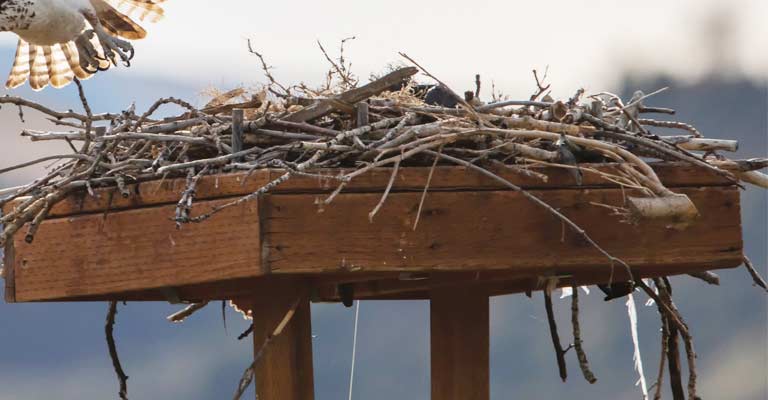
Nesting behaviors are a crucial aspect of the life history of the Alaska Red-tailed Hawk.
These birds build large nests, often constructed in the sturdy branches of tall trees. The nests are composed of sticks, lined with softer materials such as moss or feathers.
The female typically lays 1 to 3 eggs, and both parents participate in incubation and raising the offspring.
Here’s a table detailing the nesting characteristics of the Alaska Red-tailed Hawk (Buteo jamaicensis alascensis):
| Nesting Details | Facts |
| Clutch Size | 1 to 3 eggs |
| Number of Broods | Typically 1 per breeding season |
| Egg Length | Approximately 2.5 to 2.8 inches |
| Egg Width | Approximately 1.9 to 2.2 inches |
| Incubation Period | Around 28 to 35 days |
| Nestling Period | Approximately 42 to 46 days |
| Egg Description | Creamy-white with light markings |
| Nest Type | Large stick nest |
| Nest Location | High in trees, often on sturdy branches |
| Parental Involvement | Both parents participate in incubation and raising offspring |
| Nest Building | Constructed with sticks, lined with softer materials like moss or feathers |
Understanding these nesting details provides valuable insights into the reproductive biology and parental behaviors of the Alaska Red-tailed Hawk.
These adaptations contribute to the successful reproduction and survival of this species in the challenging Alaskan environment.
Breeding
Breeding in the Alaska Red-tailed Hawk occurs during the spring and early summer months. Courtship displays involve aerial acrobatics, with pairs engaging in impressive maneuvers to strengthen their bond.
The successful breeding of this species contributes to the maintenance of healthy populations within its habitat.
Diseases
Like many raptors, the Alaska Red-tailed Hawk may be susceptible to various diseases, including avian influenza, West Nile virus, and others.
Monitoring the health of these birds is essential for understanding and mitigating potential threats to their population.
Treatment
In cases of disease or injury, rehabilitation efforts are crucial. Avian veterinarians and wildlife rehabilitators may be involved in providing medical care and rehabilitation to injured or sick Alaska Red-tailed Hawks.
Prompt and effective treatment is vital for their survival and reintroduction into the wild.
Conservation
Conservation efforts for the Alaska Red-tailed Hawk focus on preserving its diverse habitats, ensuring the availability of prey species, and addressing potential threats such as habitat destruction and human-wildlife conflicts.
Monitoring populations, research, and educational initiatives contribute to the overall conservation strategy for this iconic bird of prey.
The life history of the Alaska Red-tailed Hawk is a dynamic tapestry woven with adaptations to its environment, reproductive strategies, potential health challenges, and ongoing efforts to ensure its conservation for future generations to marvel at this majestic bird in the wild.
10 Facts You Should Know About Alaska Red-tailed Hawk
The Alaska Red-tailed Hawk (Buteo jamaicensis alascensis) is a distinctive subspecies of the widespread Red-tailed Hawk found in North America.
Here are 10 key facts you should know about this remarkable bird of prey:
- Habitat Range: The Alaska Red-tailed Hawk inhabits a diverse range of environments within Alaska, from dense forests to open tundra and mountainous regions. Its adaptability allows it to thrive in various ecosystems across the state.
- Size and Appearance: This hawk is a large bird, with a wingspan ranging from 45 to 52 inches and a length of 18 to 26 inches. Its plumage is characterized by dark brown upperparts, a rufous tail, and a distinctive dark cap on the head.
- Distinctive Facial Markings: The Alaska Red-tailed Hawk is recognized by a dark line, often described as a “comma,” under its eye. This facial feature adds to its unique and easily identifiable appearance.
- Diet Diversity: Known for its prowess as a hunter, the Alaska Red-tailed Hawk feeds on a varied diet, including small mammals like voles and rabbits, birds, reptiles, and occasional carrion. Its keen eyesight and powerful talons make it a formidable predator.
- Vocalization: The hawk’s vocalization is a high-pitched scream, often heard during its soaring flights. Familiarizing oneself with this distinctive call can aid in identifying the species in the wild.
- Breeding Behavior: Breeding occurs during the spring and early summer months. Courtship displays involve aerial acrobatics, emphasizing the pair’s bond. Nests, constructed with sticks and lined with softer materials, are typically found high in trees.
- Nesting Characteristics: The female lays 1 to 3 eggs, and both parents participate in incubation, which lasts approximately 28 to 35 days. The nestling period extends for around 42 to 46 days, contributing to the successful reproduction of the species.
- Range Map: The Alaska Red-tailed Hawk’s range extends across the expansive wilderness of Alaska, covering a variety of ecosystems from the Southeast’s temperate rainforests to the Arctic tundra in the north.
- Conservation Significance: Conservation efforts focus on preserving diverse habitats and addressing potential threats such as habitat destruction and human-wildlife conflicts to ensure the well-being of this iconic bird.
- Role in the Ecosystem: As a top predator, the Alaska Red-tailed Hawk plays a crucial role in maintaining the balance of its ecosystem by controlling populations of small mammals and contributing to the overall health of the environment.
Understanding these 10 facts sheds light on the significance of the Alaska Red-tailed Hawk in the intricate web of Alaska’s ecosystems and its importance in the broader context of North American avian biodiversity.
Wrapping Up
The Alaska Red-tailed Hawk stands as an emblem of resilience, adaptability, and ecological importance in the diverse landscapes of Alaska.
Its distinctive features, from facial markings to nesting behaviors, underscore the intricate balance it maintains within its habitat.
As a key predator, its role in shaping ecosystems and contributing to biodiversity highlights the necessity of conservation efforts to ensure the continued thriving of this majestic bird in the Alaskan wilderness. Thank you very much.
